Sometimes you just know when a place is the one. It was 1978 when Anne Webb Johnson and her husband, David, found themselves looking at an unusual house on Hughes Road in North Truro. It was the home of two prominent local artists, Helen Sawyer and Jerry Farnsworth, who were in their 90s and wanted to sell.
“I walked through the back door, through the sail loft, and into the living room. Helen was sitting on a sofa there,” says Webb Johnson. “I didn’t even need to see the rest of it.”

For Webb Johnson, an artist who was working as an architectural designer in Boston, the quick attachment was almost spiritual. “I think it’s the proportions and the height of the ceilings of both the living room and loft that did it,” she says. “I’m very spatially minded.”
The sail loft is one of a kind. It is an impressive double-height room at the back of the 1840 Greek Revival that had originally belonged to the Small family. Isaac Small was the first keeper of the Highland Light, and his descendants continued the tradition and ran the Highland House Hotel, among other ventures. Webb Johnson was told that the loft was moved in the 1860s from Pamet Harbor, where it had been used as a space to store and repair sails for the local fishing fleet. In its day a utilitarian space, the dark wood interior is now filled with antiques, Persian rugs, and heirlooms. Stepping into it, you feel you’ve entered a stately English manor house.
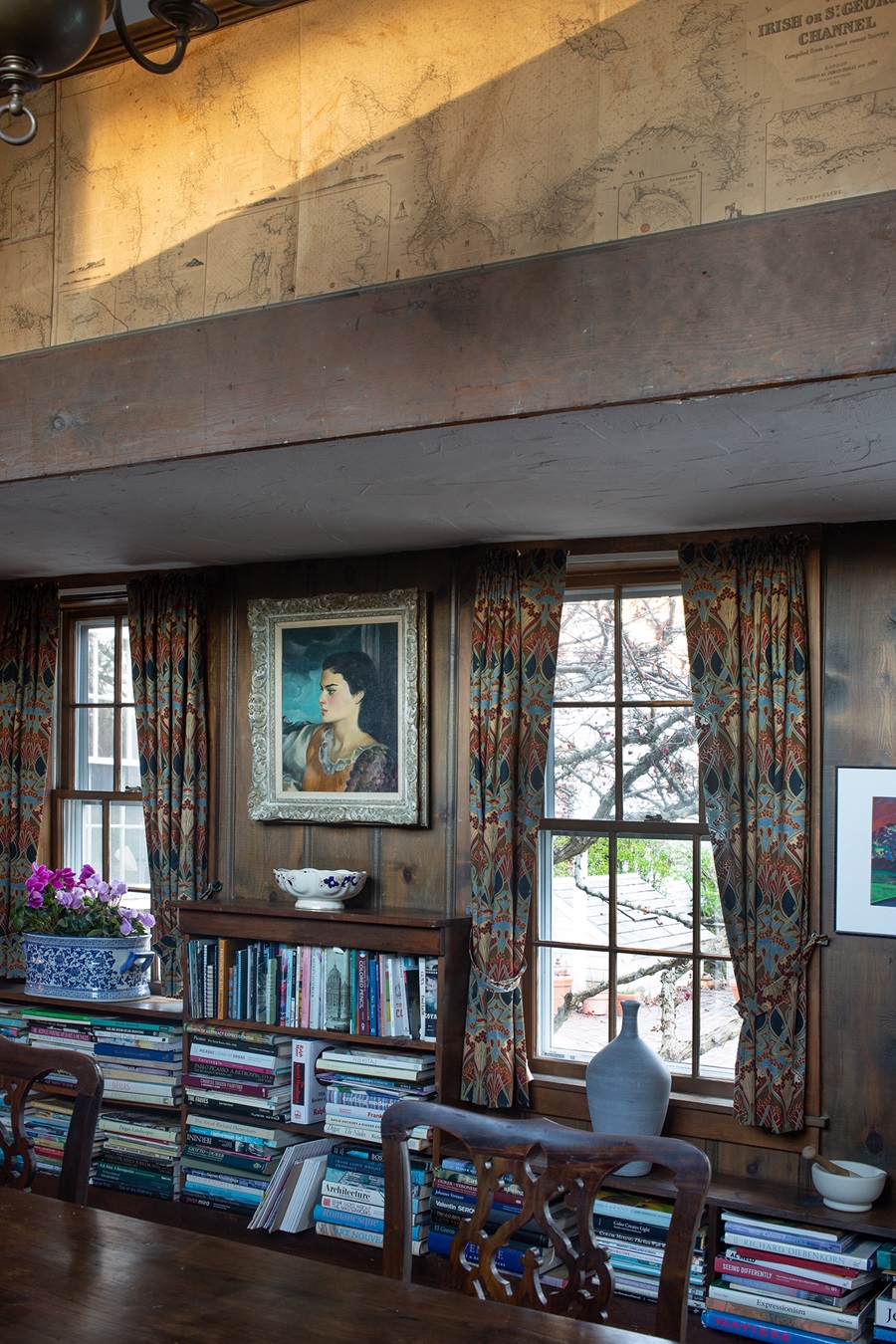
Sawyer and Farnworth, who lived in the house for much of the 20th century, repurposed the sail loft as a painting studio. Sawyer decorated the balustrades of its wrapround balcony with a collection of sailing charts that her brother used for a global circumnavigation — which he did in a small boat during the early part of the century.
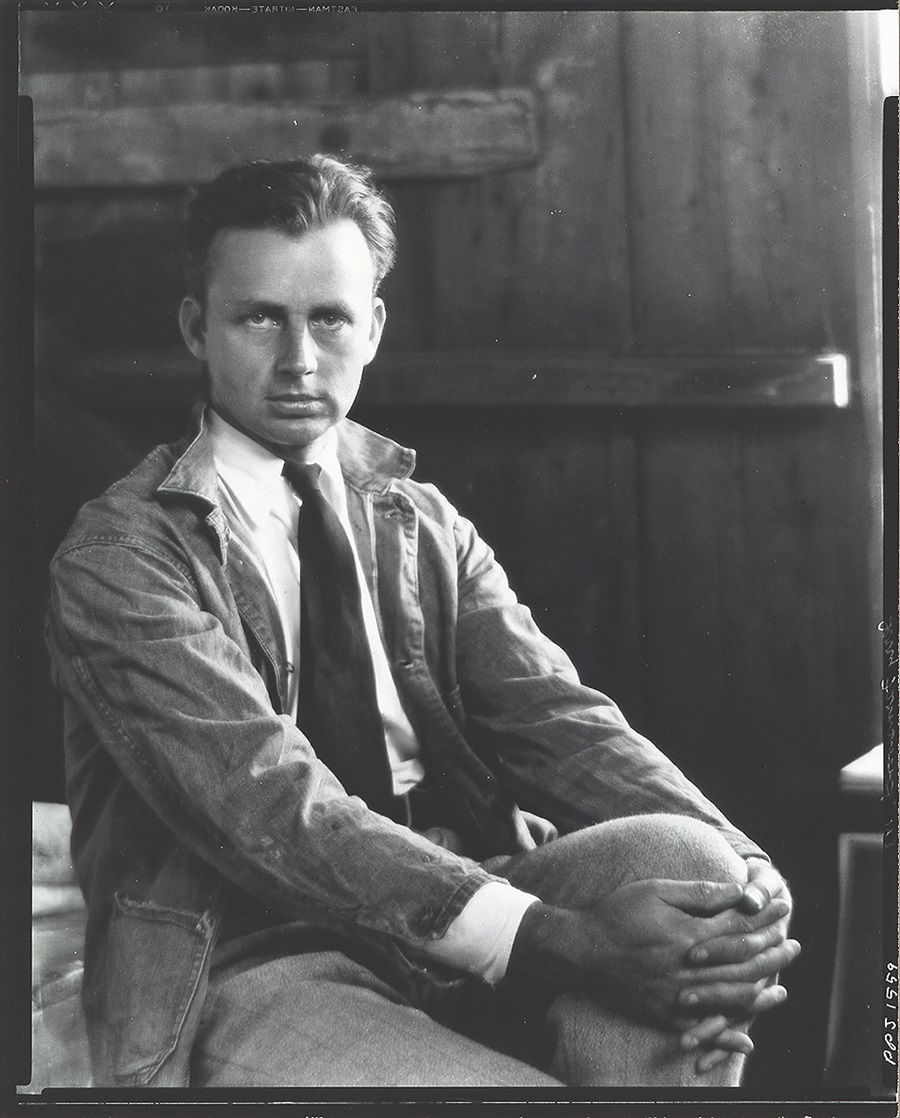
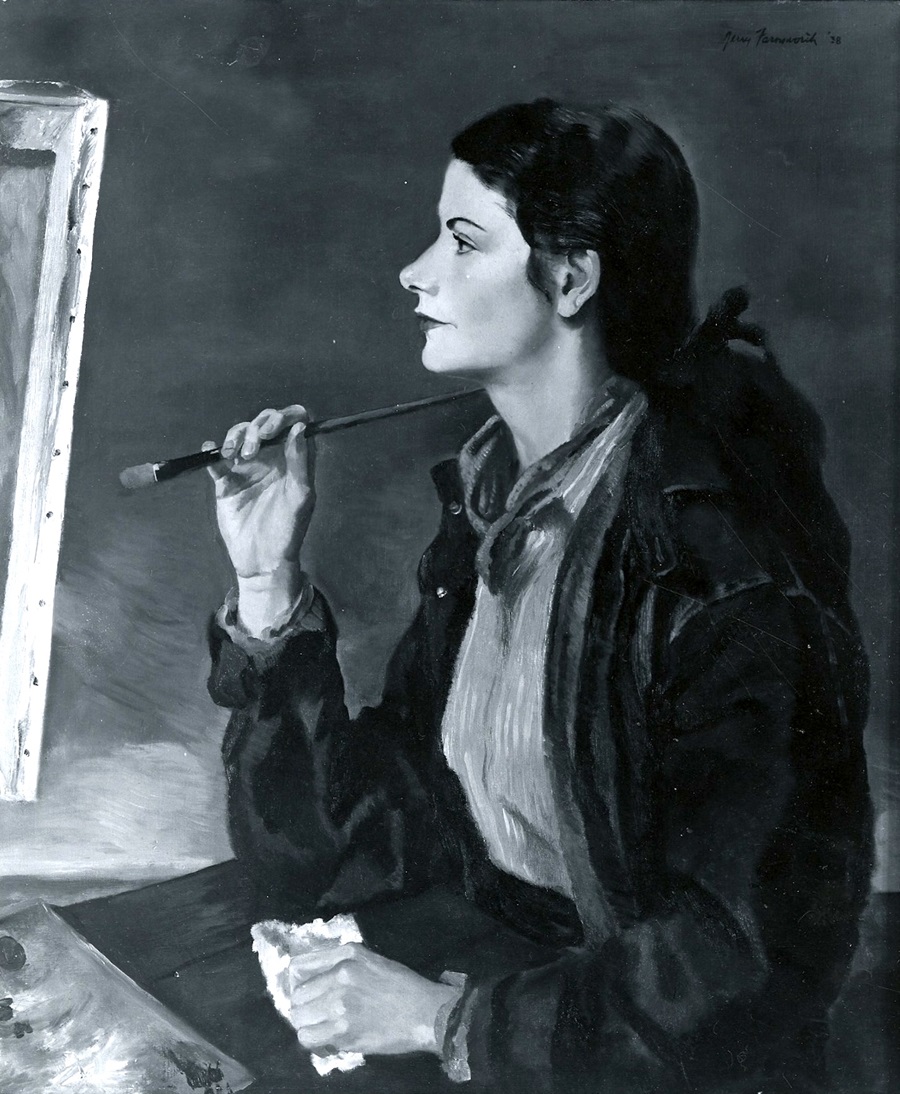
After they bought the house, the Webb Johnsons began to understand better the immense influence Sawyer and Farnsworth had in the early art scene of the Outer Cape. The artists met in the 1910s when they were both students of Charles Hawthorne, the founder of the Cape Cod School of Art. They were married in 1925. After Hawthorne’s death, they became instructors themselves, opening their own art schools in Wellfleet and Provincetown in the 1930s before founding the North Truro School of Art on Pond Village Road, where they taught hundreds of students from 1940 to 1963.
Like their mentor, Hawthorne, the couple painted in the more conventional style of the early art colony. Both were also jury members at the Provincetown Art Association (the institution founded in 1914 would in 1978 add the word “museum” to become PAAM) where they attempted to appease both the traditional realism and modern abstraction factions that had emerged in the early part of the century with the arrival in Provincetown of artists like Blanche Lazzell, Agnes Weinrich, Karl Knaths, and Hans Hofmann. For many decades, the couple remained a vital part of the artistic fabric of the Outer Cape and also in Sarasota, Fla., where they ran an art school during the winters.
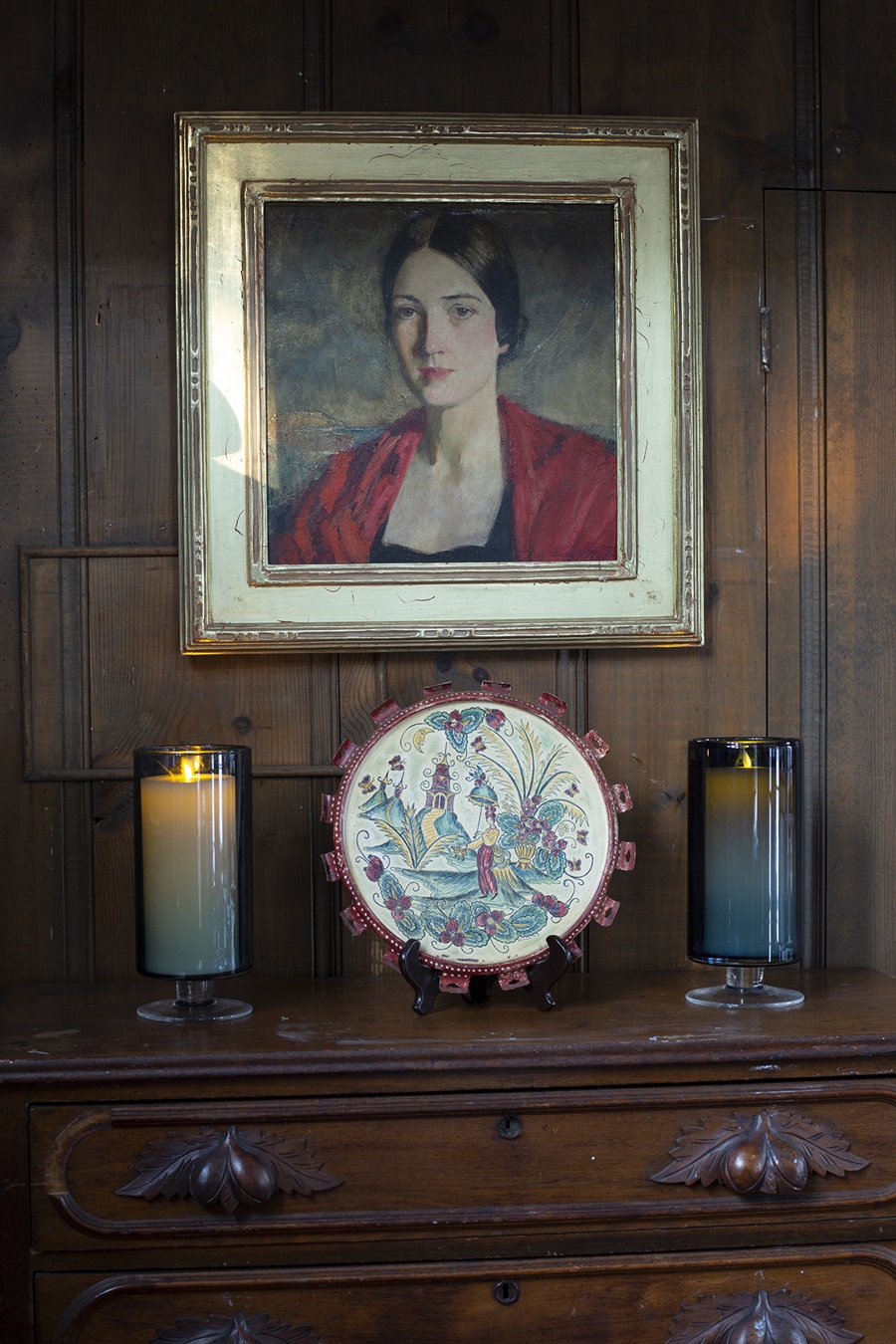
The Webb Johnsons took a circuitous route to North Truro. Both David and Anne were born in England, but the couple moved to the Bahamas in 1967. David was a physician and Anne designed houses.
“That was quite the place to be if you were doing what I was doing in those days,” she says. “It was a small pond, but lots of fun to work with the rich and famous there at the time.” David’s next post at the Lahey Clinic in Burlington later moved them to Boston.
At first, the couple were too busy with their careers in Boston to use the sail loft for much more than a storage room. Later, it became a ping-pong room for the kids and following that a romantically atmospheric dining room for entertaining.
After David died in 2007, Anne continued to come to Truro for weekends and vacations. But it wasn’t until she was “finally ready to not work anymore at the age of 79” in 2019 that she came to live in North Truro. Since then, she has enjoyed developing her skills as an artist.
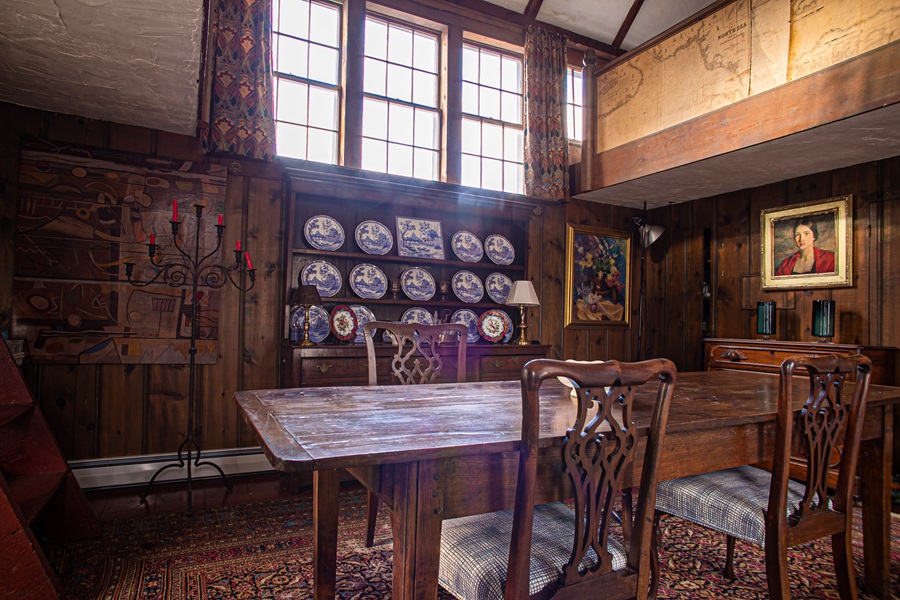
“I’ve painted ever since I could hold a brush,” she says. “My father looked at what I was good at, which was math and art, and asked around what I should do. And that’s how I got into architecture.” She went on to have a successful career with her neighbor, preservationist Chuck Steinman, specializing in designs for elder housing — her projects included the original interiors of Seashore Point in Provincetown.
For the past several years, Webb Johnson has relished her involvement with the Outer Cape Art Collective, a group organized by Provincetown artist Laura Shabott during the isolating days of the pandemic. “I think it got us through,” she says. It’s a loose affiliation of artists who meet regularly to discuss and critique their work. They’ve shown together at the Provincetown Commons, and their latest exhibition opens at Berta Walker Gallery on April 18.
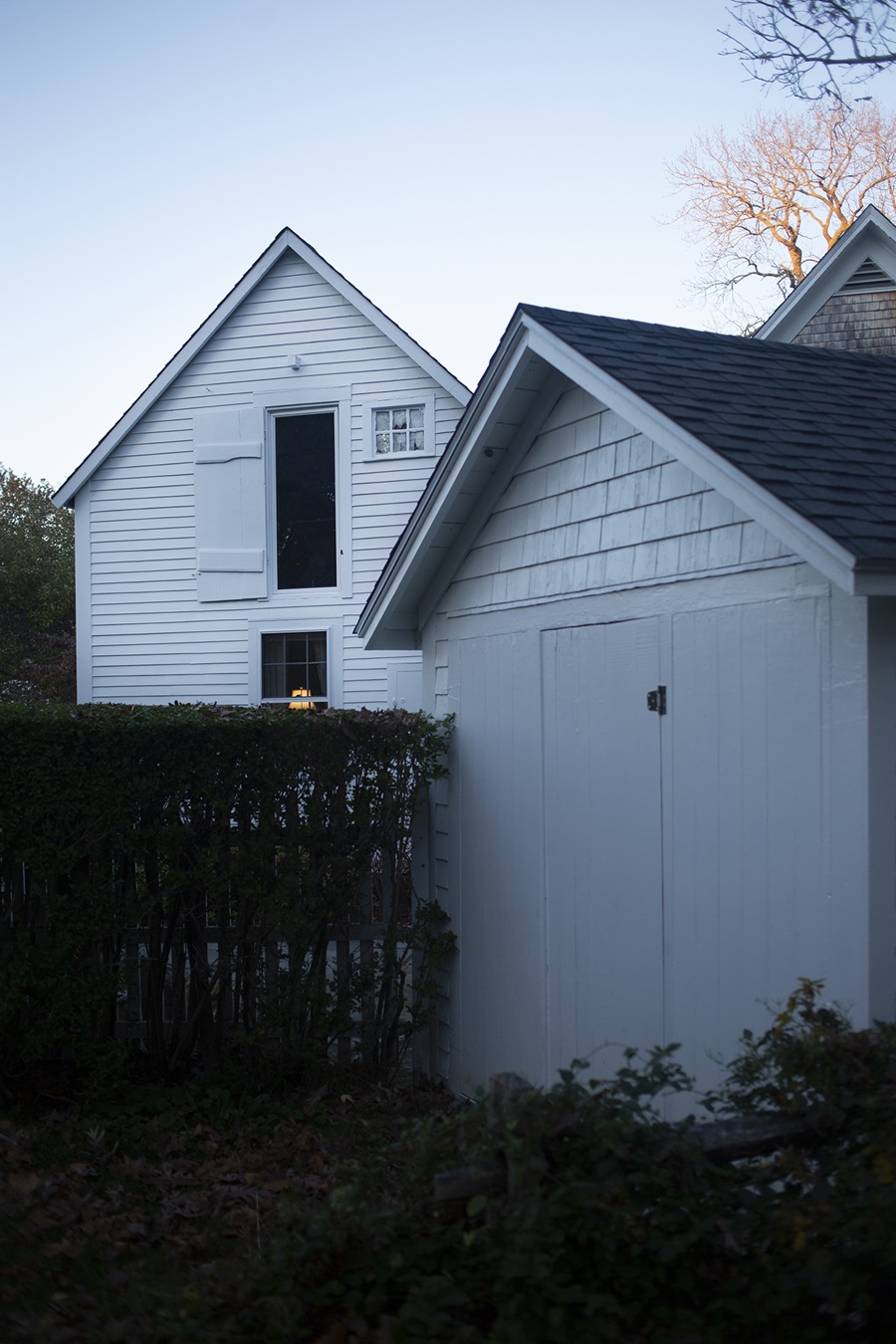
Webb Johnson continues the artistic legacy of the sail loft by throwing an oilcloth over the formal dining table. She uses it for her paintbrushes and palettes; easels lean in the corner, and stacks of her own paintings sit underneath portraits by the former owners. The room holds a sampling of the collection of art and furniture that Sawyer and Farnsworth left behind after they sold the house and moved to Sarasota. “They never quite moved out,” she says, and she likes it that way.
“Decoration-wise, this room is pretty much as we found it,” Webb Johnson says, though she and David added their own family heirlooms inherited over the years. As with many cases of historic preservation, this house, and particularly the sail loft, illustrates the importance of realizing what should be left untouched. In resisting the urge to modernize, Webb has been the steward of a historic legacy and a space that is perhaps even more magical now than when she first entered it. Sometimes the less you do, the better.
